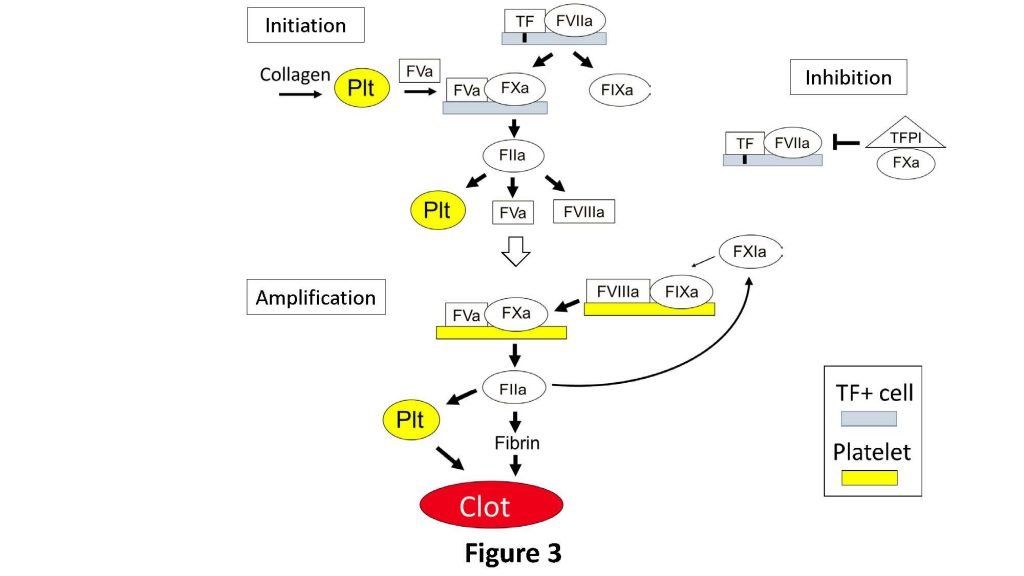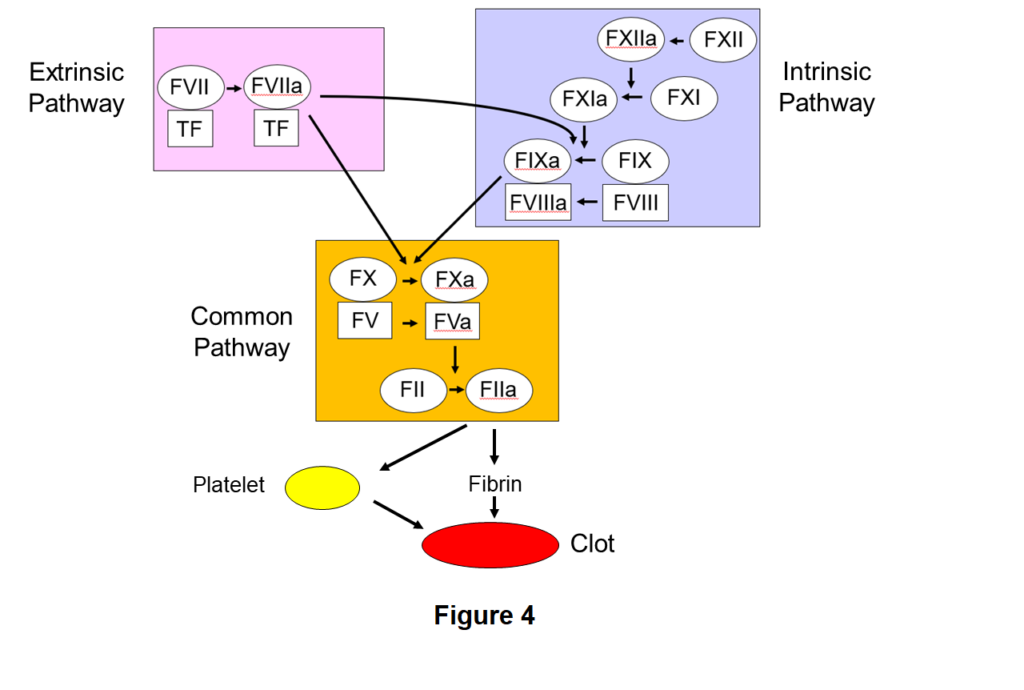The Coagulation Cascade
The coagulation cascade can be divided into initiation and amplification phases (Figure 3). After vessel injury the TF:FVIIa complex activates both FX and FIX and together with FVa from activated platelets this leads to the generation of small amounts of thrombin. In this initial phase thrombin activates the cofactors FV and FVIII and also platelets. However, the TF:FVIIa complex is rapidly inhibited by TFPI in a FXa-dependent manner. Activated platelets play a key role in the amplification of the coagulation cascade because they provide a surface for the assembly of the tenase (FVIIIa:FIXa) and prothrombinase (FVa:FXa) complexes. Large amounts of thrombin are generated and cleave fibrinogen to fibrin monomers that are crosslinked by FXIIIa.

